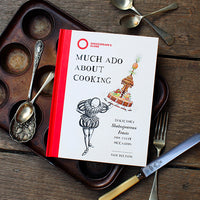
This volume is a post-publication history of the purchasers, inheritors and users of the First Folio, with chapters on Owning, Reading, Decoding, Performing and Perfecting. Consequently, it is less about Shakespeare the playwright, than the Shakespeare of the post-1623 imagination.
If the layout of the First Folio did not well suit practical usage to support performance, that does not mean that there is no evidence for such attempts, nor people attempting their own corrections of printing errors or to remedy missing character lists. But by Smith’s account, there is more general evidence for it becoming a literary storehouse of wisdom and well-expressed ideas - a source for personal collections of quotations, but also solace and identification. There are also interesting stories of the book as a colonial tool.
Surprisingly (for a printed text) the First Folio could already constitute a recognisable status object as early as the 1630s (judging by its inclusion as a prop in a painting). However, despite the author's efforts, I found it difficult to care very much about the struggles of more recent collectors acquiring copies as investments and trophies. Unfortunately, the trimmed and cleaned copies they particularly wanted can deprive us now of evidence of the book in use.
Reviewed by Philip Milnes-Smith (Digital Archivist)
Shop Shakespeare's First Folio: Four Centuries of an Iconic Book




































![Out, Out Brief [Playhouse] Candle Stubs!](http://shop.shakespearesglobe.com/cdn/shop/products/swpcandles.jpg?v=1722516059&width=200)










